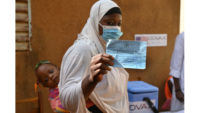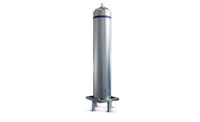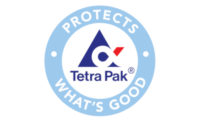By Tetra Pak
Tetra Pak announced that in 2012 the company made further progress towards its 2020 environmental goals and its ultimate aim of providing fully sustainable packaging, using only renewable materials and leaving a minimal environmental footprint and zero waste.
Two years ago the company set ambitious 10-year targets to drive environmental excellence, focusing on three key areas: environmental footprint, sustainable products and recycling.
“Our environmental approach considers everything from how we source materials and make our products to what happens after they are used – and everything in between,” said Jason Pelz, vice president, Environment, Tetra Pak Inc. “We have to support our suppliers, customers and consumers. Together, we can reduce the environmental impact of the entire industry and find solutions for future success, and Tetra Pak is committed to remain a unique partner for sustainable growth.”
Highlights from 2012 include:
Recycling
• Target: Double the global recycling rate for used beverage cartons by the end of the decade to 40%.
• Result: Global recycling of used Tetra Pak cartons increased by 10% in 2012 - from 528 kilo tonnes to 581 kilo tonnes, which is 22.9% of the total. Some 3.6 billion more Tetra Pak packages were recycled in 2012 vs. 2011.
In North America, Tetra Pak helped increase access to carton recycling as a founding member of the Carton Council. Today, carton recycling access has increased to 43%. Now, more than 49 million households can recycle cartons in 44 states. In 2012 alone, carton recycling expanded to nearly 8 million households. Tetra Pak is investing tens of millions of euros to promote consumer awareness and work with local municipalities in its drive to increase recycling rates around the world.
Sustainable products
• Target: Develop packaging based on 100% renewable materials and increase the supply of Forest Stewardship Council-certified paper board available for use in Tetra Pak packages to 100%, with an interim target to achieve 50% in 2012.
• Result: Tetra Pak packages with bio-based polymer caps derived from sugar cane grew to 610 million in 2012, up from 80 million in 2011. Nestlé and Coca-Cola are among the first companies to introduce these Tetra Pak packages in South America.
In 2012, 26.4 billion Tetra Pak packages carried the FSC label in 39 countries around the world, a 40% increase over 2011. Tetra Pak increased the supply of FSC-certified paperboard to 38%, up from 34% in 2011.This fell short of the 2012 target of 50% that we set in 2011. The company is now working to bring this measure back on track, improving internal systems to better match supply and demand and working with suppliers and other stakeholders to further increase the access to FSC-certified paperboard.
Tetra Pak continues to work toward a completely renewable package. Tetra Brik Aseptic® Edge, recently launched in the U.S., is the result of the company’s green design innovation process. The ergonomic shape delivers major environmental improvements, including a more efficient product-to-package ratio that is 11% lighter, has a 30% thinner aluminium foil barrier, and creates 23% less carbon emissions from materials.
In addition, Tetra Pak Inc. renewed its partnership with the World Wildlife Fund’s Global Forestry & Trade Network in the U.S. and committed to purchase office paper from responsible sources for its U.S. and Canadian locations. Tetra Pak’s sustainable procurement policy promotes the development of markets for environmentally responsible forest products and helps manage and reduce environmental impacts.
Environmental footprint
• Target: Cap climate impact across the value chain at 2010 levels by the end of 2020.
• Result: Initial figures indicate carbon emissions in Tetra Pak’s own operations were reduced by 2 kilo tonnes CO2 equivalents in 2012 (compared to 2010 baseline) despite a 9.5% increase in production volumes over the same period.
Through 2012, Tetra Pak worked with the World Resource Institute, with WWF, and with its suppliers and customers, to establish a baseline and metrics to be able to measure the total value chain climate goal. On average, audits performed in 2010 and 2011 found potential for reducing energy consumption in its own operations by around 12% and cutting climate impact by 11%.
The Denton, Texas packaging material facility installed a solar energy system on its roof that reduces annual carbon emissions by 20 tons and reduces total usage. In addition, 40% of the energy supplied to the plant is from renewable sources.
Click on the link for more information about Tetra Pak's environmental and social policy and actions and a copy of the latest Sustainability Report. .




